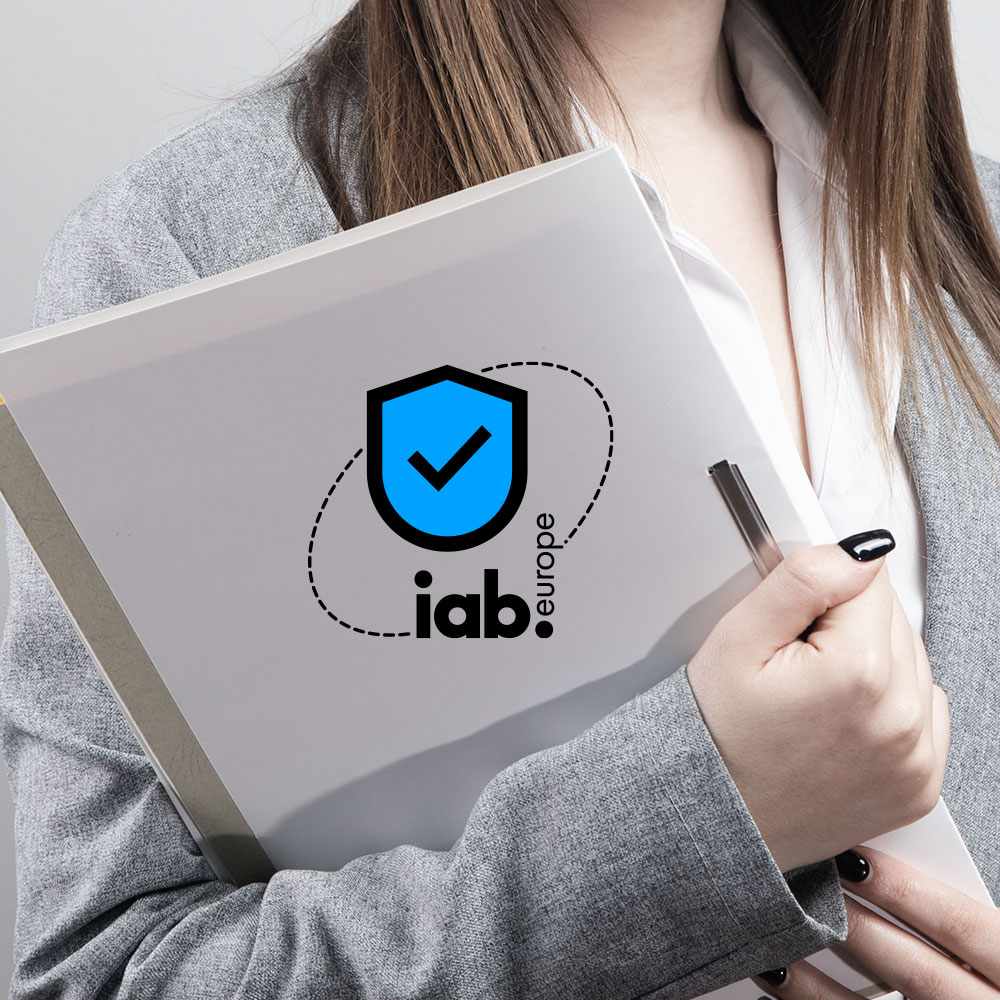Consumers’ personal data is being collected, stored, and used online all the time. This is why personal privacy is a pressing issue for both consumers and businesses, especially as data privacy regulations become more prevalent. With the increasing growth of digital platforms and services, stricter requirements for data collection and use, and the widespread adoption of personalized marketing, companies are continuously seeking innovative ways to leverage data.
Thanks to data privacy legislation such as the European Union’s General Data Protection Regulation (GDPR) and California’s Privacy Rights Act (CCPA), consumers now have more privacy rights and often a right to anonymity. This helps to ensure that when organizations use personal data in some cases — where they don’t need to know the user’s identity and consent does not need to be obtained — be used to identify any individual person.
This concept lies at the heart of data anonymization. There are other, similar functions that we will explore, like de-identification and pseudonymization, as well as their uses.
What is data anonymization?
In short, data anonymization is the process of protecting private or sensitive personal information by erasing or encrypting identifiers that connect an individual to stored data or make them identifiable using one or more pieces of that data.
It refers to the act of permanently stripping personally identifying information (PII) in such a way that an identification link can not be re-established. This means that this type of data is not subject to consent requirements because it does not identify individuals.
However, anonymized data can’t guarantee complete anonymity, and real-world cases have shown that at times anonymized data has been re-engineered to be identifiable again. This can be done for identity theft, fraud, or selling more complete data profiles. There is a particular risk when the anonymized data is combined with publicly available sources.
What is data de-identification?
De-identification refers to the removal of PII from datasets to protect individuals’ privacy. In other words, data processors should be able to handle the information, such as for analytics or research, without having any recognizable link to, or being able to directly identify, the person it came from.
It’s worth noting that de-identified data can be re-associated with the person it came from, so the information necessary to do this must be kept separate and secure to avoid privacy violations.
In addition, unlike some other similar functions, de-identified data is subject to consent requirements and must be included in your privacy policy and cookie banner.
What is pseudonymization
Pseudonymization is a form of data de-identification in which personal identities are replaced with artificial identifiers or pseudonyms. For example, stripping a real name and replacing it with “Jane Doe” is pseudonymization. However, in reality, it’s usually a random ID.
It’s not impossible to re-identify data that’s gone through any of these three procedures or to reverse engineer the process that was used to de-identify the data, so it’s not a guaranteed action. Organizations need to be careful about:
- how the removal of identifying factors is done
- how the resulting data is stored (including data that could be used for re-identification)
- what the de-identified data is used for
- how users are notified about the process being done
- what consent is obtained (if needed)
- what other data may be available that could contribute to re-identification (e.g. publicly available sources)
What is data de-anonymization?
Data de-anonymization is the opposite of data anonymization. Also known as data re-identification, it’s a technique used in data mining to re-identify encrypted or obscured information. This is done by cross-referencing anonymous data with other data sources to uncover the source of the anonymous data and reverse the anonymization process to reveal the identities of individuals associated with the data.
De-anonymizing data is not inherently illegal, but it may raise privacy concerns and potentially violate data protection regulations. The legality of de-anonymizing data depends on the context, the purpose of the de-anonymization, and the applicable laws and regulations. De-anonymizing data can be used for various legal purposes, such as research or marketing. However, it’s crucial to ensure that the de-anonymization process is conducted in a secure and responsible manner that respects individual privacy rights and complies with applicable laws and regulations.
Read about marketing data management now.
Data anonymization examples and use cases
Some sectors, such as market research companies, government organizations, and medical and research organizations often use data anonymization to safeguard confidential information while collecting data at a large scale. For example, hospitals and research labs often collaborate. Therefore, hospitals will implement data anonymization techniques to share valuable yet private information.
Another sector that often uses data anonymization is retail. Retail businesses rely on customer data for insights and market research. However, getting explicit consent from customers for this purpose can be challenging. Through data anonymization, personalized parts of the data can be obscured or entirely removed, thus enabling retailers to unlock more value in their data.
The financial sector also uses data anonymization to protect sensitive customer information, like bank account details, credit card numbers, and transaction histories. Doing so allows for data analysis, fraud detection, and regulatory compliance without compromising their customers’ privacy.
Lastly, the educational sector also benefits from data anonymization to protect their student’s privacy and detailed records.
Advantages of data anonymization
There are obvious benefits to adopting data anonymization. These include:
- Enhanced data security: Anonymizing data can significantly reduce the risks associated with data breaches by removing or hiding sensitive and/or easily identifying details of personal information, such as names, addresses, and social security numbers.
- Achieve regulatory compliance: Data anonymization can be a crucial practice for ensuring your company’s compliance with data protection regulations, depending on your purposes for data processing. By anonymizing data, you may be able to legally process personal data without risking privacy violations. It’s important to be familiar with relevant privacy regulations. You can still derive valuable insights from the data while respecting regulatory requirements and protecting individuals’ sensitive information.
- Improve trust and reputation with users: By anonymizing data and being clear with users about how and why it’s done, your organization shows it values privacy. This is one of a few ways to build trust.
- Improved security: By implementing data anonymization, you make the data less attractive to hackers or thieves, potentially discouraging attempts to access, steal, or sell it.
Disadvantages of data anonymization
Data anonymization, while potentially important for privacy protection and regulatory compliance, comes with certain drawbacks that your company should be aware of.
- Less accurate data: Using traditional data anonymization methods often means losing valuable information, which can make it hard to get useful insights for analysis and research. Balancing privacy and usefulness can limit the effectiveness of data-driven decision-making.
- Fewer marketing uses: Anonymization can limit the purposes for which the user data can be put to work, even with consent, e.g. it prevents the data from being useful for personalized marketing.
- Best for anonymized aggregate data: Data anonymization is useful for analyzing overall trends with grouped data. But when it comes to individual-level analysis, like in health research, anonymization can be a roadblock.
- Privacy risks remain: Even with data anonymization, there’s a risk of someone with malicious intent being able to re-identify individuals. As machine learning models get better, they can potentially re-identify anonymous data. So, anonymization doesn’t always mean complete privacy, and the tools to reverse anonymization are getting more powerful and accessible.
- Makes collaboration with third parties more difficult: Anonymized data can make collaboration with third parties harder because you can’t easily integrate data from different sources after anonymization, thus limiting its potential analytical value. Anonymization may make data of little use to some third parties that need data for sales and marketing purposes, especially if they specialize in targeted campaigns or data sale.
What data should be anonymized?
Not all datasets require anonymization, so marketers, database administrators, and others must determine which ones do, both for data processing purposes and requirements of relevant data privacy laws.
In practical terms, compliance standards and organizational policies both typically result in classifying certain PII as sensitive data that should be anonymized for certain uses. Certain types of data are typically recognized as PII, regardless of legal or industry definitions.
- name
- home address
- Social Security or similar government ID number
- IP address
- biometric information
- phone numbers
- credit card number
How data anonymization helps protect privacy?
Online data protection and privacy are growing concerns among consumers. Most people have no idea how many “digital crumbs” they leave online, and thinking about it could quickly become overwhelming. However, the onus of privacy and security should not be entirely on consumers, and data privacy laws help to focus the responsibility for data privacy compliance and protection of the data accessed onto those that collect it, like the companies whose websites we visit or apps we download.
Data anonymization helps protect online users by helping to prevent the exposure and exploitation of people’s sensitive information. When personal data is leaked, stolen, or illegally sold, the results can range from a minor annoyance to catastrophic, e.g. with identity theft or extortion.
By hiding PII data and rendering it anonymous, you’re not only working to comply with regulations like the GDPR and CCPA, but you’re making a visible effort to increase trust with users and customers.
How to anonymize data?
Today, most businesses online collect some form of personal data, and not just in e-commerce. There are several ways that personally identifiable information like names, credit card numbers, email addresses, etc. can be anonymized from their owners:
- Data masking: hiding data via altered values. Some common data masking techniques include word or character substitution and character shuffling. But this information can be re-identified so it’s not true anonymization.
- Generalization: deliberately removes some of the data to make it less identifiable. This technique eliminates sensitive parts of data without changing the important information. For example, removing some parts of home addresses while still keeping the general geographic location intact.
- Data swapping: also known as shuffling and permutation. As the name suggests, this method rearranges data so the same data points are in the dataset, just not in the original order.
- Data perturbation: this technique uses a proportional factor to add what data scientists call “random noise” to a dataset. This involves randomly altering some data points by random amounts. However, random noise can also be filtered out, so this method isn’t foolproof either.
- Synthetic data: is the only technique that may be acceptable under the GDPR and similar regulations. It involves creating artificial datasets that look like the original dataset and retain the same relevant properties. The GDPR doesn’t explicitly discuss synthetic data, but it states that the regulation applies only to data that has a link to “an identifiable natural person”, which synthetic data does not, even if it mimics real user information.
Data anonymization and the GDPR
The GDPR defines anonymous data as data that “does not relate to an identified or identifiable natural person or to personal data rendered anonymous” so “the data subject is not or no longer identifiable.” This means that if data has undergone anonymization techniques, such as encryption or removal of personally identifiable information, rendering the data subject no longer identifiable, the GDPR does not apply to that data.
However, the EU’s data anonymization policy is unclear. This can lead to challenges for organizations seeking GDPR compliance. The GDPR does cover anonymization in Recital 26, but there is a lack of clear guidance on what constitutes effective anonymization in practice.
A consent management platform (CMP) like Usercentrics Web CMP or Usercentrics App CMP can help your company with informing users and obtaining consent for the collection and use of personalized data. Even when the data will be anonymized, consent remains a requirement for several uses.
Data anonymization best practices
Data anonymization sounds like a solid tactic for protecting personal data and privacy, but there are some aspects that remain legally unclear, so it can be hard to know how to properly implement a successful data anonymization strategy. There are some best practices, however.
1. Understand your data: Before anonymizing (or even collecting) data, it’s crucial to have a clear understanding of the types of data you collect, how they’re stored, and how they’re used. This includes identifying what information is considered sensitive or personally identifiable, and how it may be connected to or used with other personal data.
2. Prioritize what needs to be anonymized: Not all data needs the same level of anonymization. Identify the specific use cases for your data and prioritize them accordingly. Also, some purposes require that data remain intact, e.g. personalized marketing efforts, so for some uses data cannot be anonymized so all other legal and security requirements for data collection, storage, and use must be observed.
3. Map out relevant legal requirements: Different regions and industries have specific regulations regarding data protection and use, which should include anonymization. Ensure compliance with laws such as the GDPR, CCPA/CPRA, and others where relevant. Align your anonymization practices with these legal standards to avoid potential fines and penalties.
4. Conduct data discovery and classification: Conduct a thorough data discovery process (e.g. as part of a data audit) to identify all direct and indirect identifiers within your dataset. This includes personally identifiable information (PII) such as names, addresses, and social security numbers, as well as indirect identifiers that could potentially lead to re-identification when combined.
By following these four best practices, your organization can anonymize data to protect privacy and security while still deriving valuable insights for analysis and research purposes.
The future of data anonymization
The escalating frequency of data breaches and the heightened scrutiny of privacy regulations underscore the critical need for businesses to prioritize data privacy.
Whether initiating new efforts or enhancing existing measures, the imperative lies with organizations that need user data to limit and safeguard customer information while ensuring transparency through easily accessible data privacy policies.
By proactively addressing these foundational steps, businesses can fortify their operations, build trust with customers, and navigate the evolving landscape of data protection with resilience and integrity.





